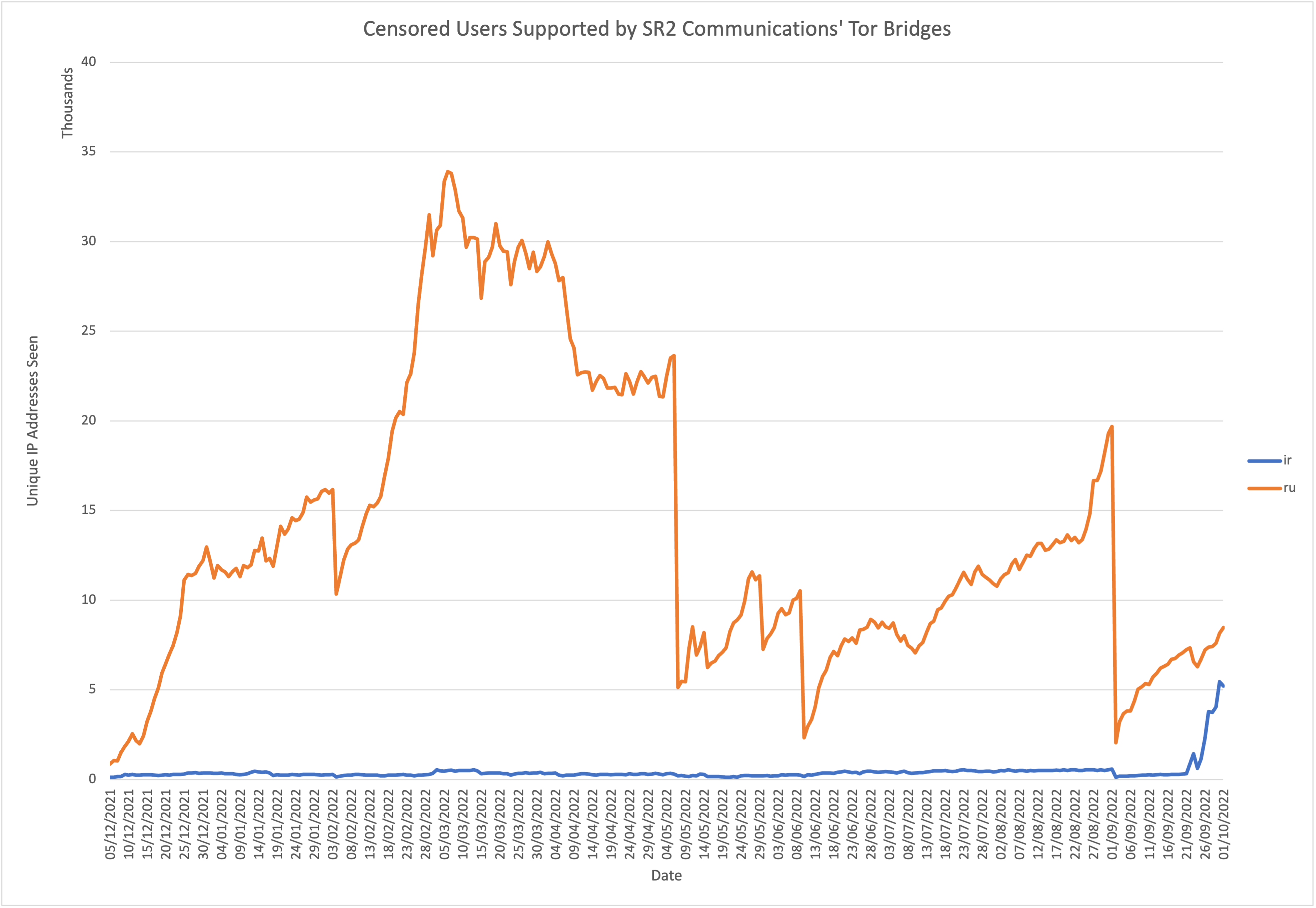
In December 2021, SR2 Communications became involved in a project funded by Open Technology Fund1 in collaboration with Tor Project to automate the deployment of Tor bridges for use by those in Russia to access the free and open Internet.
Russia had began aggressively censoring Internet access in the lead up to the invasion of Ukraine in a bid to control the flow of information, and has continued to do so during its unprovoked and premeditated war.
To distribute these new bridges, Tor Project developed a new Telegram channel to access bridge information. As Telegram is extremely popular in Russia, there is a high cost to blocking it, so we can use this channel to distribute bridges without having to worry about censorship. Full instructions on how to obtain Tor Browser and access the Telegram bot were made available in Russian and distributed by many channels.
This funding came to an end, and some additional funding has been secured since to continue operating the infrastructure without any new significant development work. Even without new development work, the system we have built continues to function mostly unattended, and we see this from our usage statistics:

This chart shows the sum total of unique client IP addresses seen connecting to each bridge, grouped by country using the same IPFire geoip database as is used by Tor Metrics. The statistics are aggregated at the bridges themselves, so only the bridges see the client IP address. The chart is generated from data that is publicly available via CollecTor.
We also see from our usage statistics that we’re beginning to be a lifeline to users from Iran too, since the death of Mahsa Amini. On the 30th of September we supported over 6,000 Iranians with access to the free and open Internet. This access can mean reading foreign news sources to get information about what is going on, communicating with friends and family to ensure they are safe, and securely organising.
Running these bridges is a cat-and-mouse game, but we’ve been very fast mice. You can see incidents where large numbers of bridges have been blocked together and so our reach has taken a hit (the vertical drops in the chart), but we’ve been proactive to get new bridges running and distributed to those in need.
We believe the current funding for running the bridge infrastructure itself may come to an end this year. We have some development work that would improve the overall reliability of the system, but we may find that we have to scale back our work in this area and reduce the number of bridges that we can afford to run. At the time of writing, we are running 55 bridges and making available almost 2 gigabits per second of censorship resisting bandwidth to the Tor network.
If you’re interested in running your own fleet of Tor Bridges, all of our code is open source software (BSD 2-clause) and available on GitLab. If you have the means and would like to support this project, you can donate with the following link:
If it appears that there is community support, we will explore setting up a subscription option to ensure that these resources are available wherever they are needed, when they are needed.
Financial support does not imply endorsement. ↩︎